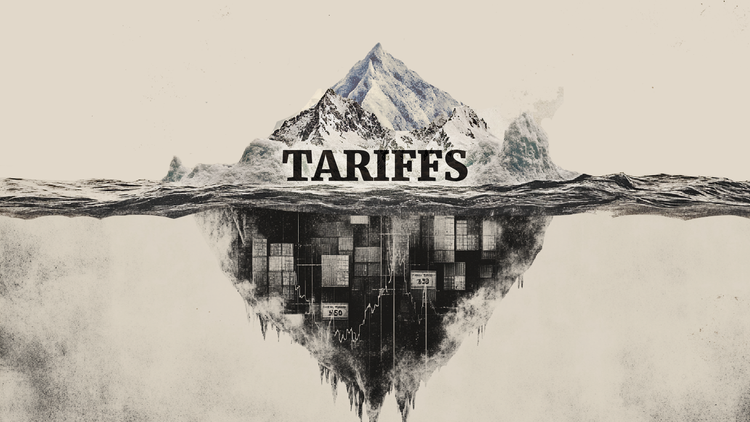Despite all the difficulties, 2022 has become quite productive for Russian scientists and engineers. Breakthroughs have been made in almost all areas of human activity. Many complex astrophysical studies have been carried out, a large number of materials with improved physical properties have been created, new factories, laboratories, and so on have been assembled. What was remembered each month in the domestic scientific world?
💡 This is a material from the “Made in Russia 🇬🇺” cycle, which describes the main domestic inventions, as well as important events in various fields of science and industry in Russia.
January: next-generation hyper-realistic robot assistant created
The Perm company “Promobot” presented an improved version of the robot Robo-C-2. It was equipped with a new silicone skin that has better elasticity and is more like a human, hyper-realistic eyes, movable arms that mimic human gestures, and improved servos. Moreover, the robot has significantly increased the range of regulation of micromimicry, which now allows you to express emotions more vividly. About 600 variants of human mimicry are available to Android. Robo-C-2’s arms are capable of withstanding loads up to a kilogram. The robot can pick up small objects, shake hands with humans, and so on. The process of sending commands is implemented using scripts that are created by the company’s engineers using special software.
February: assembled a constructor from magnetic molecules inside nanotubes
Physicists from the Center for Photonics and Two-Dimensional Materials of the Moscow Institute of Physics and Technology, together with colleagues from the Russian Quantum Center, were able to grow magnetic nanobands in single-walled carbon nanotubes. A single-walled carbon nanotube is a one-atom-thick layer of carbon, i.e. graphene, rolled into a cylinder with excellent physical properties for the synthesis of new materials at the nanoscale. The hollow space inside the tube can be a container for nano-objects (eg molecules). The researchers carried out a series of complex manipulations and eventually received a structure consisting of carbon nanotubes and magnetic stripes less than one nanometer wide inside. The new material has unique optical and magnetic properties, which opens up opportunities for the development of a variety of protected low-dimensional magnetic materials for use in organic spintronic, magnon and quantum devices.
March: came up with a technology for treating wounds without antibiotics and antiseptics
Scientists of the Baltic Federal University. I. Kanta, together with colleagues from France and Colombia, conducted research that made it possible to create a compact device that accelerates medical procedures using non-thermal plasma (ionized gas, where electrons have a high temperature, and positive ions have a low temperature, that is, it can be used in processing skin and open wounds without causing pain). The stream of charged particles contained in the helium jet interacts with air particles, which creates ozone and short-wave ultraviolet radiation. This helps to quickly and painlessly heal wounds, destroy pathogenic bacteria and viruses without the use of antiseptics and antibiotics. Also, non-thermal plasma produces a rejuvenating effect.
April: improved method for obtaining biofuel from plant waste

Bio-oil is now being considered as an alternative to fossil fuels, since it is obtained from renewable plant materials, such as crops or waste products from the forestry and pulp and paper industries. However, compared to conventional oil, bio-oil contains a large amount of water (up to 30%), and also carries many times more (up to 60%) oxygen-containing compounds. Russian scientists have proposed a simple and environmentally friendly way to process bio-oil. The new technology makes it possible to use the water contained in the raw material as a source of hydrogen to refine the raw material and improve its properties. This approach makes it possible to process bio-oil bypassing the expensive stage of water separation.
May: Proposed a solution to generate wind energy even with grid overvoltage
Researchers from Skoltech, together with foreign colleagues, have proposed a way to stabilize the operation of wind farms under overvoltage conditions, when wind turbines are forced to turn off due to an imbalance in the power grid. The wind is an environmentally friendly, but essentially variable and inconstant source of energy: it is not always there, and when it is, it blows at a variable speed. To ensure uninterrupted operation against the background of wind drops, the turbines are equipped with so-called power electronics. However, it only copes well with undervoltage, but overvoltage has so far been a big problem. The scientific team found a solution. It turned out that the supply of a precisely matched “reactive current” to the circuit would make it possible to continuously generate energy under conditions of short-term voltage surges.
June: developed an engine for electric cars
Kazan has developed an import-substituting basic model of an electric motor for equipping Russian narrow-profile electric vehicles. These will be low-capacity units that will be installed on golf carts, various equipment in demand in housing and public utilities, and so on. A prototype will be presented in 2023. Interestingly, this will be one of the first domestic electric motors, fully developed in Russia and put into industrial production. Also, domestic specialists began the development of Russian electric motors for passenger electric vehicles, electric buses and tractors.
July: created a method for holographic recording and playback of sound
At Moscow State University, they found a way to move away from existing surround sound systems by inventing holographic sound recording. Stereo sound, quad sound, surround sound, sound dome, immersion effect and the like use the binaural effect that occurs when sound is perceived with two ears, creating the illusion of real sound. In fact, this is the same deception of human hearing, as in the case of stereo glasses that create a pseudo-three-dimensional image. Thanks to a system of hundreds of microphones and speakers, sound waves will be recorded and reproduced as identical to reality as possible. In fact, the system allows you to restore the appearance of a sound wave in space exactly the same as it comes from a real source. People will hear the real sound, not the effect. In this case, the sound will be perceived regardless of the characteristics of the listener. The author is sure that a new stage will begin in cinematography, on television and radio, when stereo sound will be replaced by holographic sound, as stereo sound replaced mono sound in its time.
August: Developed an optical fiber that can work in space
In Yekaterinburg, scientists have created a new type of infrared optical fiber, which has increased resistance to ultra-high doses of radiation, and optical losses are at extremely low values. Due to the increased radiation resistance, the material consisting of single crystals of silver bromide and iodide can be used not only in traditional optoelectronics, but also in laser surgery, endoscopic and diagnostic medicine, the space industry, as well as at nuclear industry facilities. And their use can be quite unexpected. For example, optical fiber is capable of receiving and transmitting radiation from space objects and can be used in infrared telescopes instead of massive mirrors.
September: learned how to build a 3D model of the patient’s heart right before the operation

In St. Petersburg, the technology has been significantly improved, which allows creating a model of the heart and its main vessels on the basis of computed tomography right before the operation. Previously, it took specialists at least two hours to convert a CT scan into a highly accurate digital model. Employees of the Polytechnic University have developed an algorithm that does the same thing in just 20 seconds. After that, surgeons have the opportunity to print it on a special 3D printer using photopolymer resin. Due to the plasticity of the material, the heart model is similar to organic tissues both anatomically and structurally. On it, specialists will be able to conduct a trial operation. This will allow doctors to evaluate the effectiveness of the surgical intervention before surgery, draw up an optimal procedure plan and avoid unforeseen errors.
October: invented a DNA robot to detect viruses
Scientists from the ITMO Chemistry and Biology Cluster have developed a highly sensitive nanorobot made of DNA molecules that can quickly detect the presence of pathogens in samples, for example, taken from the walls of the nose. Its effectiveness has been tested against COVID-19, but in the future, DNA robots can be adapted to detect other viruses as well. In terms of diagnostic accuracy, the new development is comparable to PCR tests, which are currently one of the most sensitive methods for the molecular diagnosis of infectious diseases. The system is able to detect the virus even if it is present in small quantities. At the same time, DNA robots do not require laboratory conditions, expensive reagents and trained personnel, and in this respect they are similar to express tests. In the near future, the first samples of new test systems for home use should appear.
November: synthesized analogue of the most complex mineral on Earth

A group of crystallographers from St. Petersburg was able to synthesize in the laboratory an analogue of the most structurally complex mineral of the Earth – yuingite. Its crystal structure is based on nanoclusters of uranium atoms and carbonate groups. Due to the specific thermodynamic conditions required for its formation, the mineral is considered very rare. Even despite the significant experience of mankind in the synthesis of crystalline structures, it took a year and a half to recreate this unique creation of nature in the laboratory. In addition to fundamental scientific interest, this study is also of quite practical value, since even depleted deposits still contain a significant amount of uranium in dispersed form. Having understood the mechanism of secondary mineral formation (recrystallization), which results in the formation of yuingite, it will be possible to control the processes of uranium removal into the environment.
December: found a way to quickly measure the quality of water, food and medicines
Researchers from Penza have developed a three-element resonant two-terminal device – a device that will measure the quality of products in stores, the purity of water and air, determine the parameters of sensors of physical quantities, electrical and radio products, and so on. The device is an equivalent circuit of materials and their properties. Depending on the equivalent circuit, that is, on the characteristics of devices and objects connected to this device, it will be possible to recognize the quality of products for a wide range of uses. At the same time, the new measuring method copes with the work much more accurately than the existing ones. Thus, the device will be useful in measuring instruments of almost all branches of human activity, including medicine, food and heavy industries, electronics, and so on.
Worthy Mentions
Also, 2022 will be remembered as one of the breakthrough years in the field of particle acceleration. So, in June, a joint group of Russian scientists was able to create a room-sized particle accelerator comparable in power to huge units. It is based on the conversion of laser energy into a high-energy flow of gamma radiation. At the same time, the average efficiency of laser energy reaches 0.05%, however, in the course of test work, scientists set a record for the efficiency of converting laser energy into gamma rays with energies above 10 MeV – about 1.4%.
And in November, at the domestic injection complex NICA (an analogue of the Large Hadron Collider) at the Laboratory of High Energy Physics at JINR, scientists managed to accelerate such heavy ions that are currently not accelerated to relativistic energies in any scientific center. After acceleration in the Booster, xenon ions are recharged to the state of bare nuclei, injected into the Nuclotron, and stable circulation of the beam accelerated to an energy of about 3 GeV/nucleon is obtained. The applied station SOCHI on argon ions was also tested, which in the future will irradiate chips on the extracted beam.
Source: Trash Box
Charles Grill is a tech-savvy writer with over 3 years of experience in the field. He writes on a variety of technology-related topics and has a strong focus on the latest advancements in the industry. He is connected with several online news websites and is currently contributing to a technology-focused platform.







